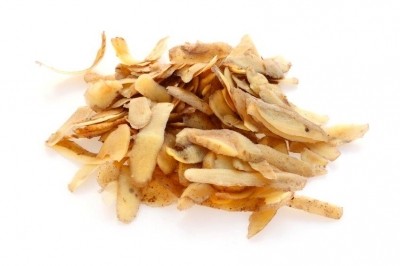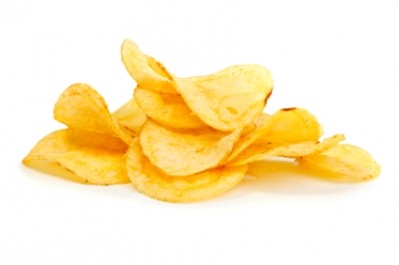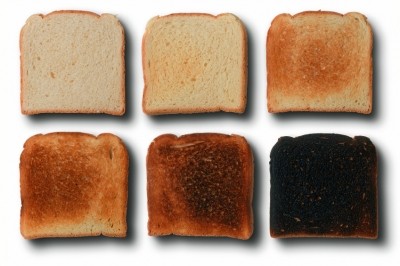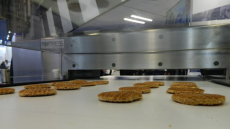Irradiation may reduce acrylamide formation in crisps
Scientists based at research institutes including the Institute of Chemical Technologyand the Bhabha Atomic Research Centre in Mumbai found that the acrylamide content was nearly 7 per cent lower in potato chips (crisps) made from irradiated potatoes stored at 14°C and 4°C than the corresponding non-irradiated controls.
They reported their findings in the journal Food Chemistry.
Acrylamide is a neurotoxic compound, and probable carcinogen. It is found at significantly higher levels in carbohydrate-rich foods including potato chips, French fries and crisp bread. It has been shown to originate from the Maillard reaction of the amino acid asparagine with reducing sugars.
Gamma radiation is widely used to inhibit sprouting, extend the shelf life of potato and make it available during off season or lean period, said the authors.
The hypothesis behind the research was based on the fact that as sprouting increases the amount of reducing sugars in potatoes its subsequent inhibition would decrease the reducing sugars during storage, resulting in fried potato products with lower contents of acrylamide.
Method
The researchers said that studied eight varieties of potato for this study, namely Kufri Anand, Kufri Lavkar, Kufri Satlaj, Kufri Bahar, Kufri Badshah, Kufri Chipsona, Kufri Surya, and Kufri Jyoti, all of which are currently being used for processing in India.
They reported that the potatoes were procured and packed (1 kg) in polyethylene bags and irradiated in air to an average absorbed dose of 60 Gy using a cobalt-60 source at the Bhabha Atomic Research Centre.
The dosing was carried out using the standard Fricke dosimeters and the dose uniformity ratio was 1.1, continued the authors, who explained that the irradiated and non-irradiated potatoes were stored separately at two different temperatures, 14 ± 2 °C and 4 ±2 °C. The relative humidity was maintained at 90 per cent, they said.
The authors observed that while the “recommended storage temperature for potatoes is about 2-4°C, that recommended for irradiated potatoes is 14°C.”
Acrylamide content of potato chips was determined by using liquid chromatography-Mass spectrometry/Mass spectrometry (LC-MS/MS) as described previously, while the colour of the potato chips was measured using a Hunter Lab Colourimeter Labscan XE.
The researchers commented that the Hunter Lab notation was used, where L* denotes levels of lightness or darkness (0 for black, 100 for white), a* represents redness (positive values) or greenness (negative values), and b* yellowness (positive values) or blueness (negative values).
They added that the content of reducing sugars and asparagine was also determined in the eight potato varieties.
Results
The levels of reducing sugars in irradiated potatoes at both the storage temperatures after six months were lower than non-irradiated controls.
The acrylamide content of potato chips prepared from non-irradiated control potatoes increased from 416.40 to 548.75 and 631.22 μg/kg for potatoes stored for six months at 14°C and 4°C, while for the irradiated potato the increase was to 502.60 and 587.30 μg/kg at 14°C and 4°C, respectively.
The interaction between temperature and time of storage was found to be significant for acrylamide formation in chips prepared from non-irradiated potatoes while the same from irradiated potatoes was found to be non-significant.
They noted that Kufri Chipsona-2 – the potato variety that is used commercially in India for making crisps – and another type - Kufri Lavkar - showed the lowest level of reducing sugar and asparagine respectively.
Colour of potato chips is the first quality parameter evaluated by consumers and is critical in the approval of the product before consumption, note the researchers.
They found that no significant difference was observed for colour value b* at both the storage temperatures but that the L* value showed a decrease from 49.75 to 43.12 and 39.65 for potato chips prepared by using non-irradiated potatoes stored for six months at 14°C and 4°C respectively.
But they reported that the L* value of potato chips prepared by using irradiated potatoes stored at 14°C and 4°C decreased to 44.15 and 40.05, respectively.
Source: Food Chemistry
Published online ahead of print: 10.1016/j.foodchem.2011.02.034
Title: Acrylamide content in fried chips prepared from irradiated and non-irradiated stored potatoes
Authors: Mulla, M.Z., Bharadwaj, V.R., Annapure, U.S., Variyar, P.S., Sharma, A., Singhal, R.S.











